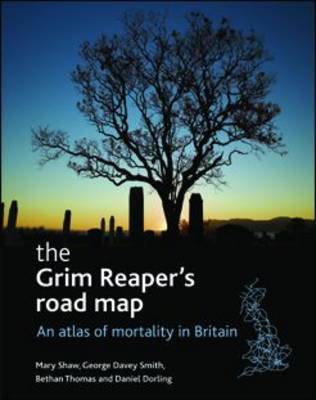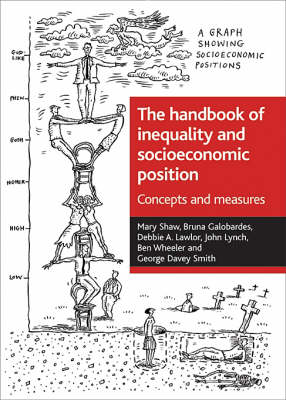Health and Society
2 total works
The Grim Reaper's road map
by Mary Shaw, Bethan Thomas, George Davey Smith, and Daniel Dorling
Published 20 October 2008
This impressive full-colour atlas, with over 100 colour-coded and accessible maps, uniquely presents the geography of death in Britain.
The first atlas published on this subject for over two decades, this book presents data from more than 14 million deaths over a 24-year period in Britain. The maps detail over 100 separate categories of cause of death, including various cancers, suicides, assault by firearms, multiple sclerosis, pneumonia, hypothermia, falls, and Parkinson's disease, and show how often these occurred in different neighbourhoods.
Accompanying each map is a detailed description and brief geographical analysis - the number of people who have died due to each cause, the average age of death and ratio of male to female deaths are listed. Taken as a whole, these provide a comprehensive overview of the geographical pattern of mortality in Britain.
This atlas will be essential reading for academics and students of social medicine, sociology of health and illness and epidemiology. It will also be valuable for anyone who wants a better understanding of patterns of mortality within Britain, including medical and healthcare practitioners, policy makers and researchers.
The first atlas published on this subject for over two decades, this book presents data from more than 14 million deaths over a 24-year period in Britain. The maps detail over 100 separate categories of cause of death, including various cancers, suicides, assault by firearms, multiple sclerosis, pneumonia, hypothermia, falls, and Parkinson's disease, and show how often these occurred in different neighbourhoods.
Accompanying each map is a detailed description and brief geographical analysis - the number of people who have died due to each cause, the average age of death and ratio of male to female deaths are listed. Taken as a whole, these provide a comprehensive overview of the geographical pattern of mortality in Britain.
This atlas will be essential reading for academics and students of social medicine, sociology of health and illness and epidemiology. It will also be valuable for anyone who wants a better understanding of patterns of mortality within Britain, including medical and healthcare practitioners, policy makers and researchers.
The Handbook of Inequality and Socioeconomic Position
by Mary Shaw, Bruna Galobardes, Debbie A. Lawlor, John Lynch, Ben Wheeler, and George Davey Smith
Published 13 June 2007
This Handbook is the definitive resource for anyone wishing to quickly look up and understand key concepts and measurements relating to socioeconomic position and inequalities. A range of key concepts is defined and measures of socioeconomic position and inequality described. Alphabetical listings, cross-referencing, graphs and worked examples, references to Web and other sources of further information, all contribute to making the Handbook both engaging and accessible for a wide audience. For students, academics and others involved in social science research, it answers questions such as: 'What's the official government measure of poverty?' 'What factors make up the Townsend Index of Deprivation?' ''What is a gini coefficient?' 'I have to write a report on tackling inequalities in my area - what are the key issues I should consider before I begin?' For practitioners, policy makers, journalists and others who must read, understand and use research in fields as diverse as health, criminology, education, the environment, transport and housing, it provides a one-stop, authoritative guide to making sense of and evaluating the significance of often complex methodologies.
The authors are all eminent researchers in the field of health inequalities. They have together produced two glossaries for the "Journal of Epidemiology and Community Health", and have published a large number of books and articles in learned academic journals.
The authors are all eminent researchers in the field of health inequalities. They have together produced two glossaries for the "Journal of Epidemiology and Community Health", and have published a large number of books and articles in learned academic journals.

